The post How Two Summer Students Advanced Science at MDI Bio Lab appeared first on MDI Biological Laboratory.
]]>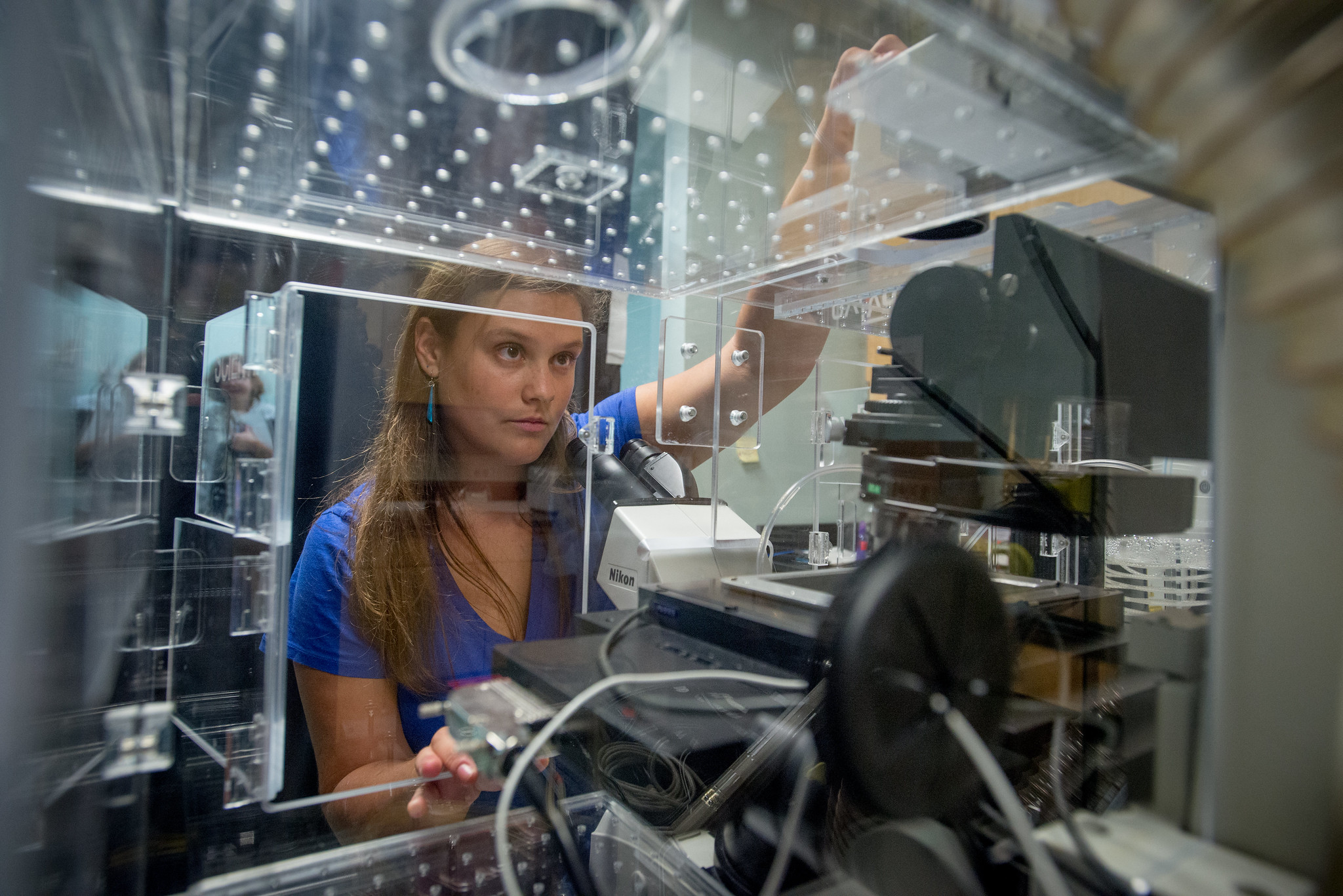
How Two Summer Students Advanced Science at
MDI Bio Lab
Summer Undergraduate Research Fellowship (SURF) Applications Due in January
Every summer, 20 undergraduates from around Maine and the nation embed in the research groups of MDI Bio Lab’s seaside campus, for a 10-week scientific adventure alongside world-class faculty mentors.
They gain firsthand training in advanced lab procedures, improve their critical thinking skills, and explore opportunities for professional development (while being paid for the valuable work that they do).
Sometimes, their work advances science itself.
That’s what 2023 SURF program Summer Fellows Abigail Wick and Taylor Stephens achieved this year, when they made a new discovery about how exposure to the stress hormone cortisol affects development of zebrafish.
Zebrafish are one of the unique array of models for human health that MDI Bio Lab specializes in, and cortisol is a steroidal hormone that increases in response to stress. Scientists in the laboratory of James Coffman, Ph.D. use cortisol treatment to examine whether some of the persistent adverse health effects of early life stress are caused by elevated cortisol.
But until this summer no one knew the precise timeframe of development in which exposure to cortisol produces those effects.
“It’s kind of the standard in the Coffman Lab to expose the zebrafish larva to cortisol, just in their environment, for the full five days of their development,” Stephens says. “So, the question that Abigail and I were asking was, ‘does it have to be five days?’ ”
To answer the question, the students went through something of a crash course in benchwork. Stephens says it proved to be harder than she had imagined at the outset.
“The first day our lab mentor Janelle (Grendler) said to us ‘can you guys pipette micro-amounts of a treatment and we both said ‘yeah, we’ve definitely done that, we can do that,’ ” she recalls. “But then it came time to load a plate with samples of larvae… the plate had 384 wells. I had never seen a 384-well plate in person before. Those wells are tiny!”
The project required weeks of trials, retrials, and caused some hand-cramps along the way, but it ended in success. The zebrafish were genetically programmed to produce fluorescence when the stress response is triggered, and the young women used that signal to pinpoint the minimal effective timing for cortisol applications.
They found that cortisol only needs to be applied from the fourth to fifth day of the fish’s development to produce a response. The work demonstrated that the developmental processes affected by the cortisol treatment are not active in the first three days of development – a meaningful research result.
And at a very practical level, it means research in this area at MDI Bio Lab and elsewhere can dispense with cortisol treatments for the first three days of development – an important finding for laboratory efficiency.
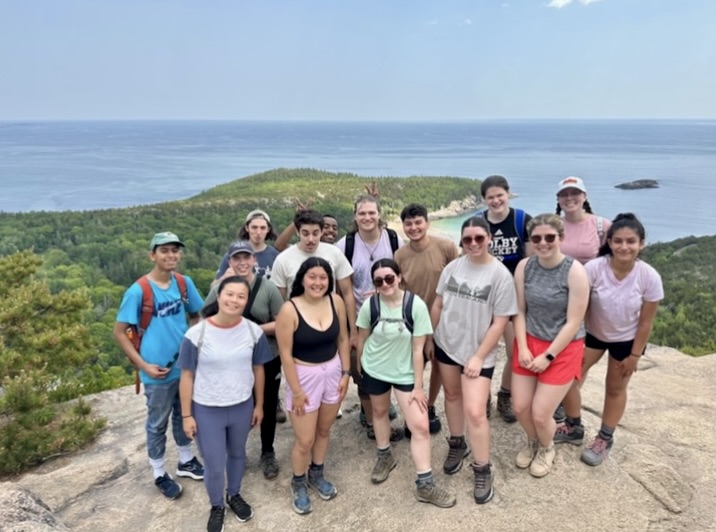
“Taylor and Abby discovered that the developmental window of vulnerability to the cortisol exposure is relatively late, encompassing a stage after which much of larval development is complete, but continues in the central nervous system,” says James Coffman, Ph.D., the Principal Investigator (PI) who is leading research here on the effects that early stress exposure can have on physical and cognitive health later in life – work that will inform efforts to reduce harmful stress effects in humans. “They worked well together and made a great team, and it was a joy to have them in the lab.”
Wick is now a junior at Colby College, Stephens a senior at Mississippi College. They say that their experience in Coffman’s lab built a storehouse of knowledge, skills and confidence that will propel their careers in biomedical science: Taylor intends to seek a Ph.D. in neuroscience; Wick says she will seek a medical degree.
“You obtain so many skills with the PIs and their lab partners, whether it be data analysis, or science communication, or critical thinking and how best to work through an experiment,” Wick says. “And in addition to that, you’re in such a beautiful location with an amazing cohort of other people that have very similar career goals to you — the networking you’re able to have while you’re at MDI is incredibly valuable. So… highly recommend.”
Applications for the 2024 SURF program are due by January 26th! Find out more here.
The post How Two Summer Students Advanced Science at MDI Bio Lab appeared first on MDI Biological Laboratory.
]]>The post Launching Bioscience Careers at MDI Bio Lab appeared first on MDI Biological Laboratory.
]]>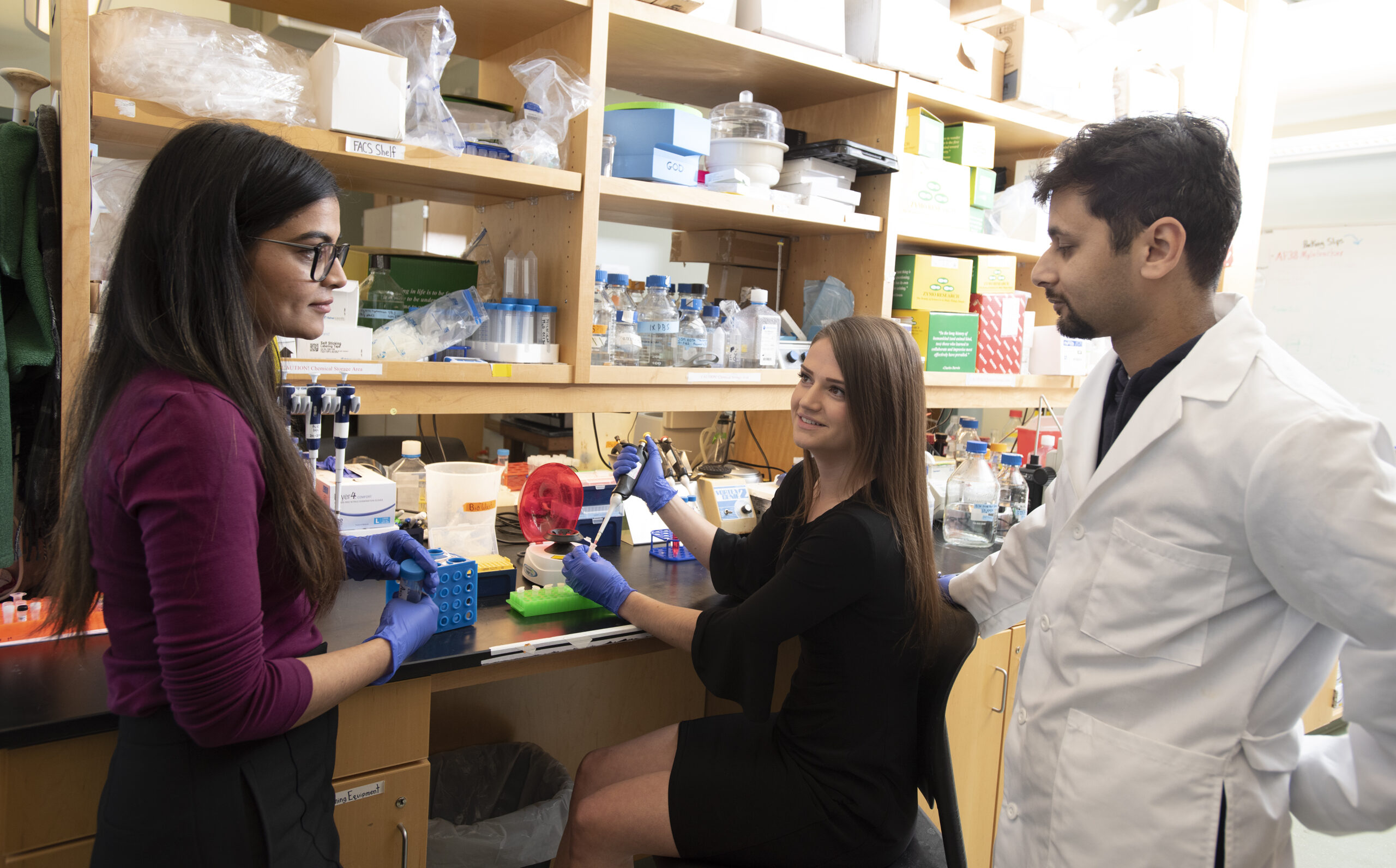
Launching Bioscience Careers at MDI Bio Lab
More graduates and post-docs are energizing the Bar Harbor campus
Gabriela Johnson, a graduate student at MDI Bio Lab, recalls the first time she established a new tool for analyzing cell functions in an adult axolotl (Mexican salamander) which is an emerging model for the study of regenerative medicine.
“Oh, my gosh, it’s working, it’s been confirmed,” she thought. “Overcoming that barrier, and seeing it work for the first time is just amazing. It’s a hard feeling to describe.”
MDI Bio Lab’s leaders say that creating the conditions for young scientists to experience that kind of research success is an essential part of its mission. It’s one reason why the Bio Lab is working to significantly grow the number of graduate students and post-docs doing research here year-round.
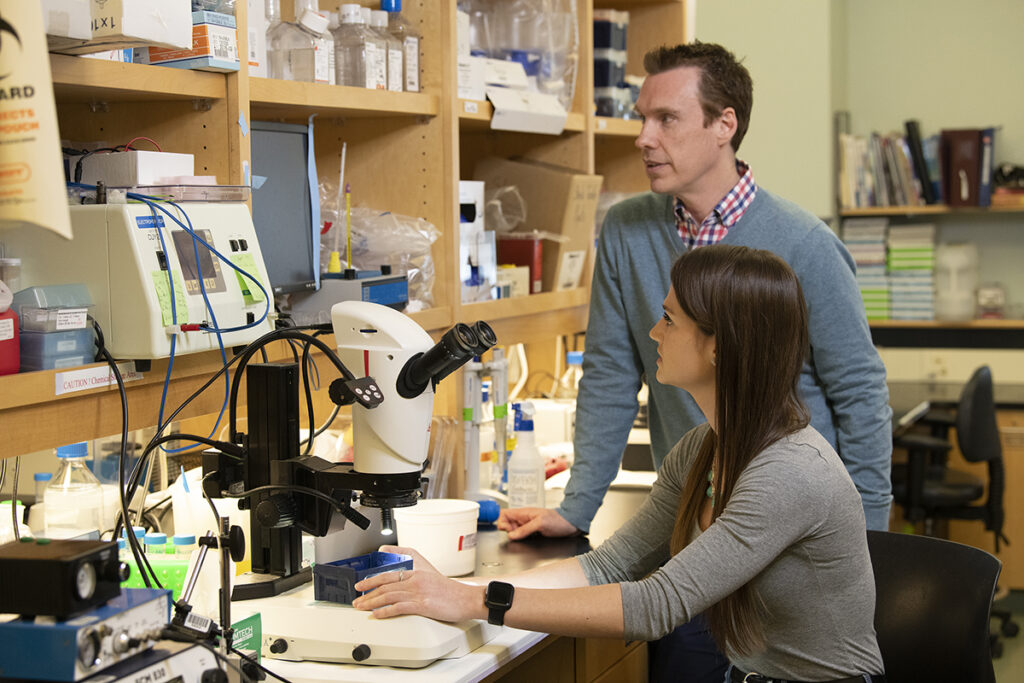
“All of the impact of what we’re doing will fall flat if no one carries it forward,” says Iain Drummond, Ph.D., Scientific Director of the Kathryn W. Davis Center for Regenerative Biology and Aging. “We look to grad students to ask new questions, to be demanding and to apply new technologies. They really are an engine for discovery. Their passion and motivation propels the whole enterprise.”
Growing up in rural Dover-Foxcroft, Maine, Johnson has had a lifelong fascination with axolotls. After college, she says, “I really wanted to work with axolotls, but I never expected to be able to work with them right here in Maine.”
But when she discovered that MDI Bio Lab was doing advanced regeneration research using axolotls, it was a scientific match. And with the Bio Lab’s James Godwin, Ph.D., she’s found a mentor whose regard for the animal’s remarkable regenerative abilities equals her own.
“I saw that hugely important part of a mentor-mentee relationship, having that shared curiosity, being able to work on projects together and move the field forward in any way that we can,” Johnson says.
She adds that earlier in her career she saw herself becoming a medical doctor. But working at the Lab amplified a growing interest in basic research.
“Growing up I did a lot of volunteer work in hospitals, so I got to see firsthand what it’s like for patients who are suffering from age-related diseases, or the loss of an arm or a leg,” she says. “I wanted to do my best to make a difference in any way that I can. I felt that research would be the biggest way that I can make an impact on those people.”
Research with axolotls is still an emerging field. Today, as Johnson pursues a Ph.D. here*, she is doing original work to create new techniques for removing individual cell types from the amphibian, to help understand their function and role in development and regeneration.

She believes they will support the creation of a knowledge set that one day can be applied to regenerative therapies for humans.
“The tools that we have here are just so powerful,” Johnson says. “The microscopy equipment and the flow cytometry, CRISPR gene-editing — all of the infrastructure that we have here is, in my opinion, state of the art.”
By the end of 2023, seven new graduate students will join Johnson on campus, expanding MDI Bio Lab’s robust complement of young, creative researchers powering the daily work of science in our laboratories.
It’s part of Bio Lab President Hermann Haller’s strategic vision to support as many as 15 research groups here. He says he’d eventually like to see 40 students of varying levels on campus year-round.
“This is the critical mass we need in order to make science work,” says Hermann Haller, M.D., the Bio Lab’s president. “But at the same time, we will preserve the spirit of MDI Bio Lab, which is being small, and being focused.”
*Johnson will receive her Ph.D. from the University of Maine, a frequent partner with MDI Bio Lab, which works with an international set of degree-granting institutions in Maine, France, and Germany.
The post Launching Bioscience Careers at MDI Bio Lab appeared first on MDI Biological Laboratory.
]]>The post Learning to grow new kidneys appeared first on MDI Biological Laboratory.
]]>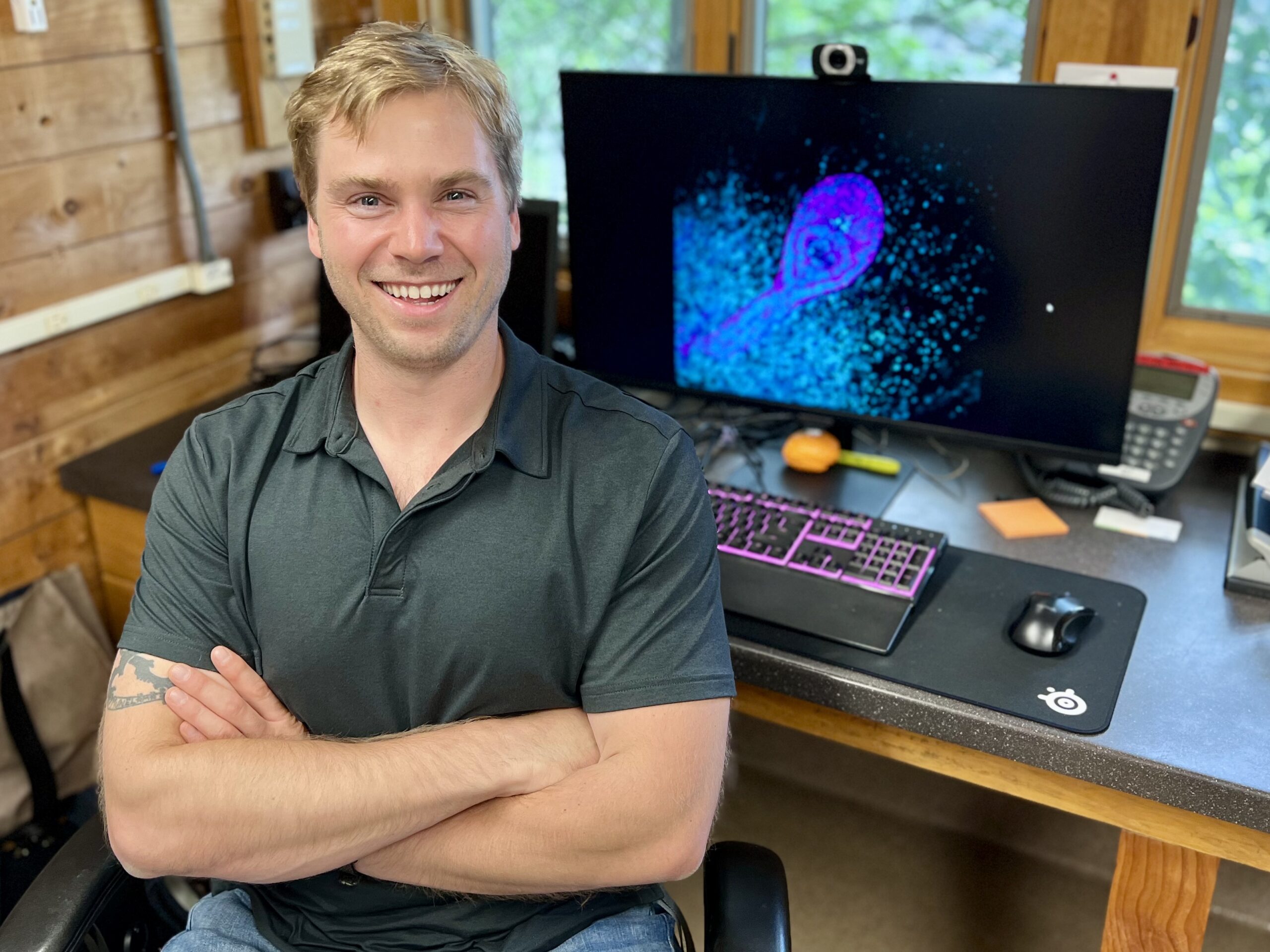
Learning to grow new kidneys
More than 30 million Americans suffer from chronic kidney disease (CKD), including thousands in Maine. And when someone’s kidneys fail, they face limited choices for managing their health: a lifetime on dialysis or finding a suitable (and willing) kidney donor.
At MDI Bio Lab an international research group is doing ground-breaking work needed to create a better alternative: new kidney tissue or even whole kidneys grown from a patient’s own stem cells.
The Bio Lab’s Cory Johnson, PhD, is growing prototype kidneys called “organoids” in carefully tended racks inside a laboratory incubator. The work puts him on the leading edge of an emerging biotechnology that holds extraordinary promise.
“It’s very sci-fi, a frontier of science that’s just getting started,” says Johnson, a Maine native and University of Maine graduate now doing his post-doctoral work at MDI Bio Lab. “I believe that organoids hold the potential for growing organs someday, outside of the body. It’s fascinating.”
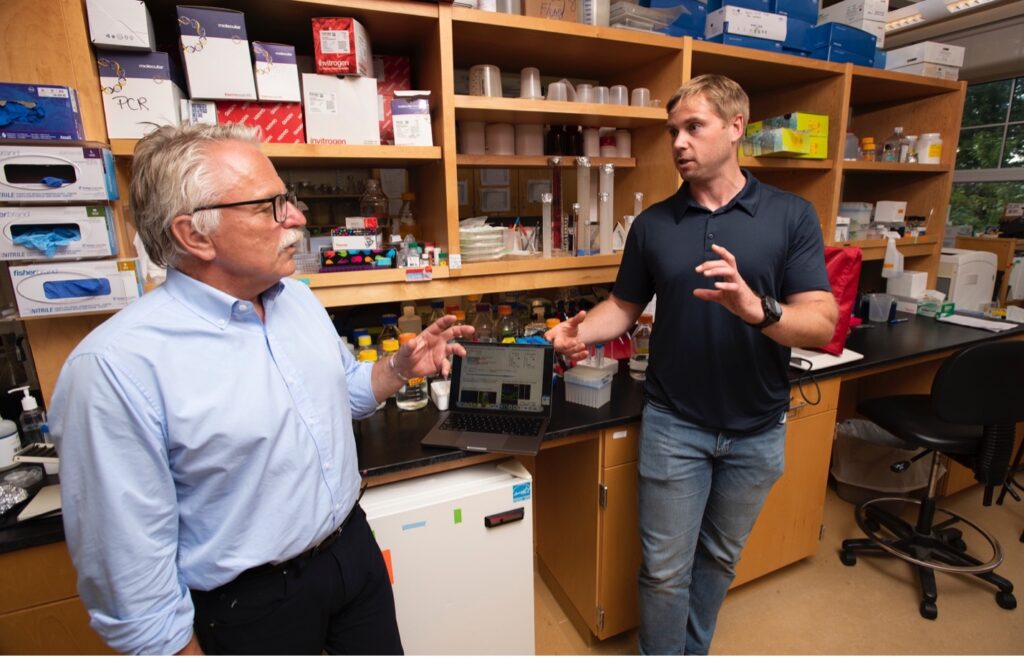
And, he adds, it’s not just about satisfying scientific curiosity, “it’s something that can actually help people.”
Today, the demand for kidney transplants far exceeds availability. More than 90,000 patients in the United States are waiting for a kidney transplant, and it takes three-to-five years to find a donor match. Too many people suffering kidney failure die while waiting.
That’s partly due to the difficulty of finding a donor whose kidney won’t be rejected by a patient’s body. Growing a new kidney from a patient’s own stem cells could help solve that problem.
It is a complex challenge. Johnson and his mentor, MDI Bio Lab President Hermann Haller, MD, are making headway on one key factor; how to get a fledgling kidney and blood vessels to grow close to and then attach to each other.
Over a series of experiments this summer, Johnson has managed to grow successive generations of kidney organoids that show preliminary evidence of penetration by blood vessels – a first step in creating a functioning organ system.
He’s documenting and confirming that progress using MDI Bio Lab’s state-of-the-art 3D microscopes and laboratory techniques for identifying specific protein and gene activity at the molecular level.
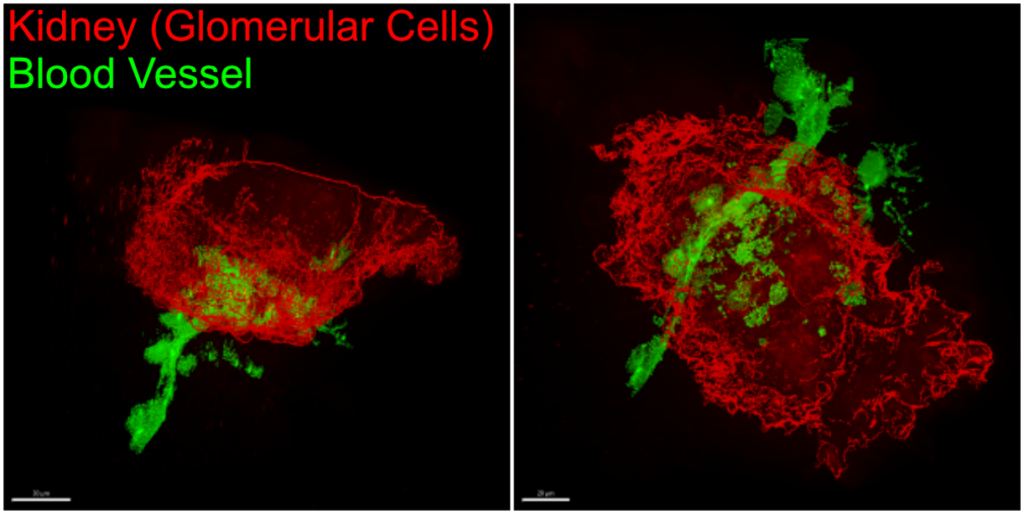
Under Haller’s leadership, MDI Bio Lab is positioning Maine as a leader in the science of aging and regeneration. He continues to serve as Professor of Medicine at Hannover Medical School in Germany, a European center for kidney transplantation and renal organoid research. Haller sent Johnson there this year to learn the techniques that he is now refining and building upon here in Maine.
For 100 years, scientists at MDI Bio Lab have worked to understand the role of the kidney in maintaining overall health and to develop new diagnostic and therapeutic tools to treat kidney disease.
“While we are fortunate to have dialysis and transplantation as options in treating chronic kidney disease, kidney regeneration is the next transformative step,” Haller says. “If we are successful, our work to grow new kidneys will revolutionize transplantation and improve human health and well-being.”
The post Learning to grow new kidneys appeared first on MDI Biological Laboratory.
]]>The post Studying Arsenic and PFAS Risks for Aging Mainers appeared first on MDI Biological Laboratory.
]]>
Studying Arsenic and PFAS Risks for Aging Mainers
Jane Disney, Ph.D. points at a water flea (Daphnia) magnified under a microscope. Water fleas are commonly used in freshwater toxicology studies.
Register for our free online Science Café on PFAS and other water-borne risks here.
Scientists at MDI Bio Lab are on a journey to learn more about contaminants in our well water, and to educate Mainers about how water-borne toxins may accelerate diseases associated with aging.
They are working with hundreds of citizen scientists to test residential wells for toxins such as arsenic, cadmium and lead. And they are beginning to study the presence of PFAS “forever chemicals” as well.
MDI Bio Lab’s team helps residents learn how to respond when contamination is detected, and participants in turn can take confidential health surveys to inform the effort to understand and combat today’s toxic challenges.
“Arsenic and other contaminants like PFAS are proving to be prevalent in Maine’s environment,” says Jane Disney, Ph.D. “We want to learn more about what their effects may be: when people get water testing done we can link those results with information from their drinking water and health surveys.”
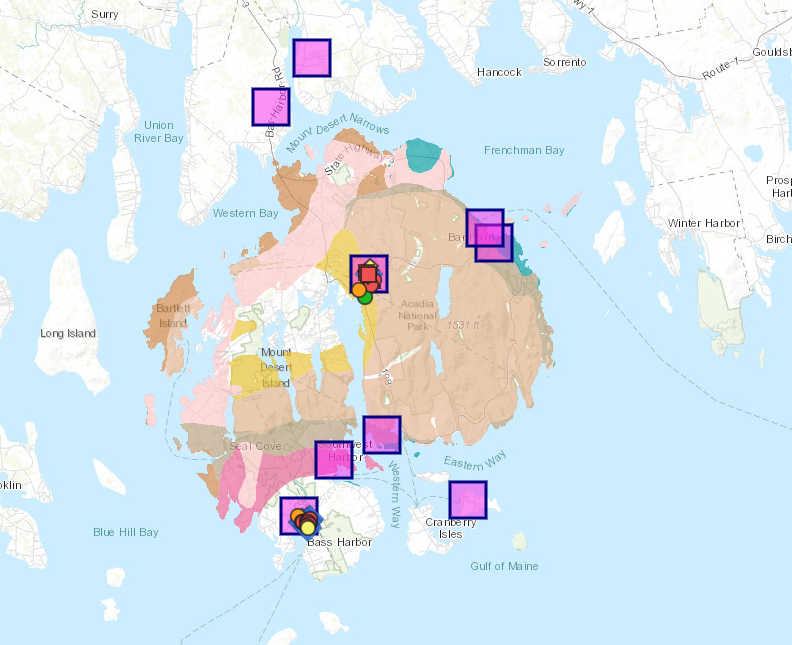
For four years, Disney has been growing the Bio Lab’s “All About Arsenic” initiatives, working with allies such as AARP Maine and the University of New England to expand the efforts’ public reach and scientific scope.
Back in the laboratories of our Mount Desert Island campus, scientists are designing experiments to explore such contaminants’ biological effects on aging, down to the cellular level.
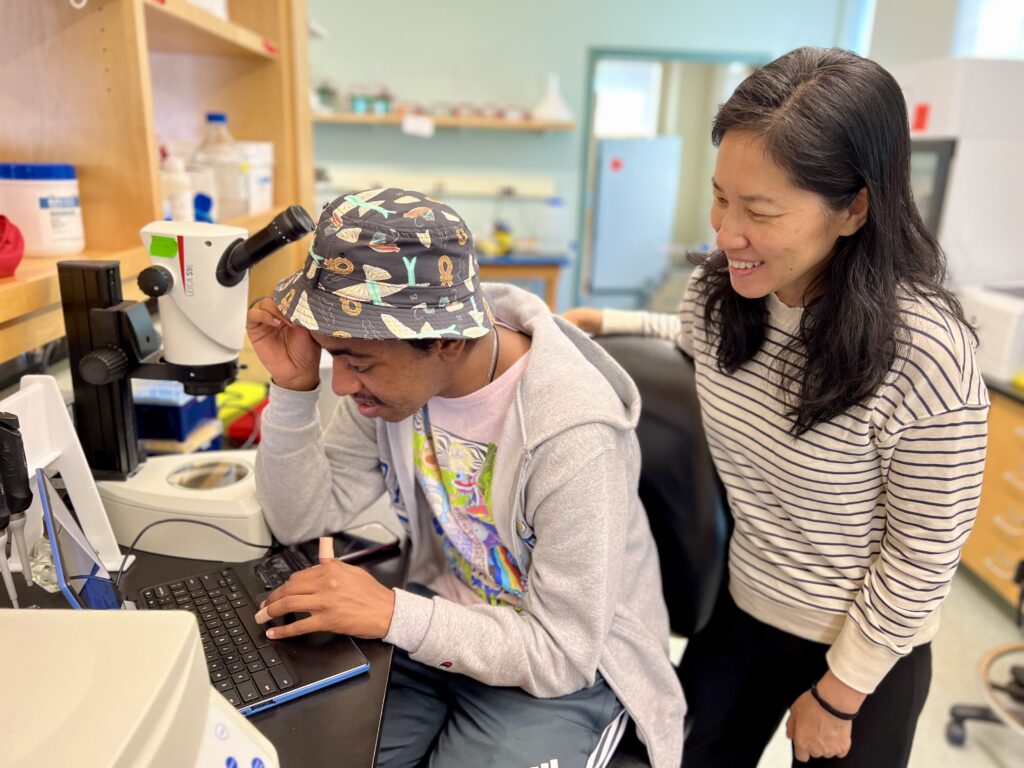
Molecular biologist Juyoung Shim, Ph.D., and Michael Abebe, a student at Georgia’s Albany State University, researched toxins with C. elegans roundworms at MDI Bio Lab this summer.
This summer a molecular biologist and Visiting Scientist from the University of Maine in Augusta, Dr. Juyoung Shim, Ph.D., created new ways to test the effects of residential well-water samples in tiny, transparent C. elegans roundworms, whose genetics are surprisingly like our own.
“There are a lot of similarities between how C. elegans worms age and how mammals age,” Shim says. “Cognitive decline or changes in mobility, the loss of muscle mass… we hope to get at some answers in an animal model that are hard to get at in the human model, to better understand how contaminants can affect the hallmarks of aging at the individual level.”
The post Studying Arsenic and PFAS Risks for Aging Mainers appeared first on MDI Biological Laboratory.
]]>The post Biotech Training and Tools for Maine Students appeared first on MDI Biological Laboratory.
]]>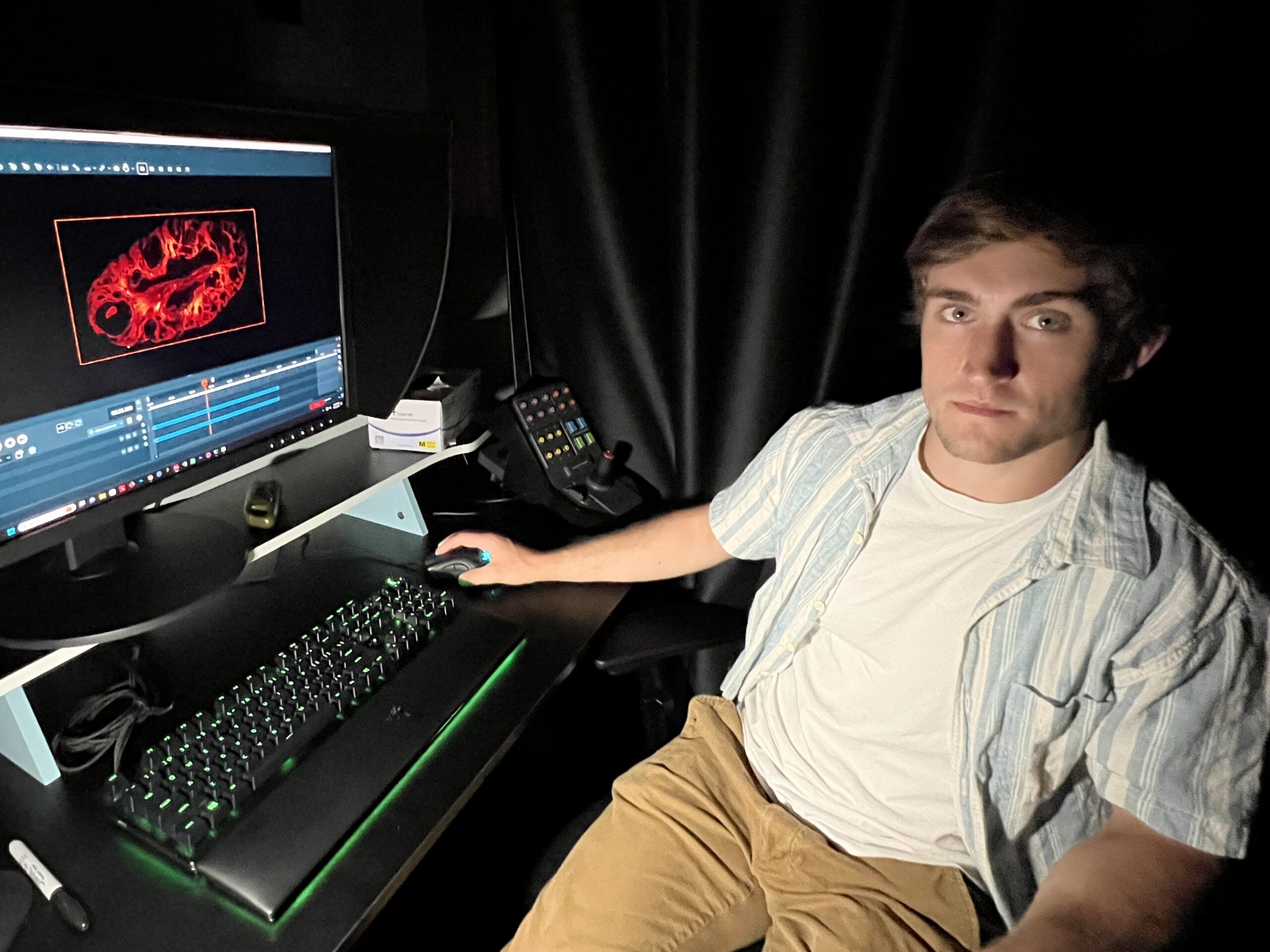
Biotech Training and Tools for Maine Students!
Freeport resident Samuel Broadbent’s first exposure to the advanced gene-editing technology called “CRISPR” came during a short course for undergraduates, held on the Bar Harbor campus of MDI Bio Lab.
That fired an ongoing interest in the science of developmental biology. “I find development to be particularly fascinating, how we go from a single cell to an entire organism,” he says.
Today Broadbent continues to pursue his passion at MDI Bio Lab, where most recently he has been training to use a truly state-of-the-art 3D “light sheet” microscope that the Lab just constructed – one of only 20 like it in the world.
“MDI Bio Lab has an amazing variety of tools which are really unique, like this microscope,” Broadbent says. “There are a lot of techniques and technologies at this institution that you can’t necessarily get working at other labs. I think that’s a big advantage for me, going forward as a young scientist, an aspiring scientist.”
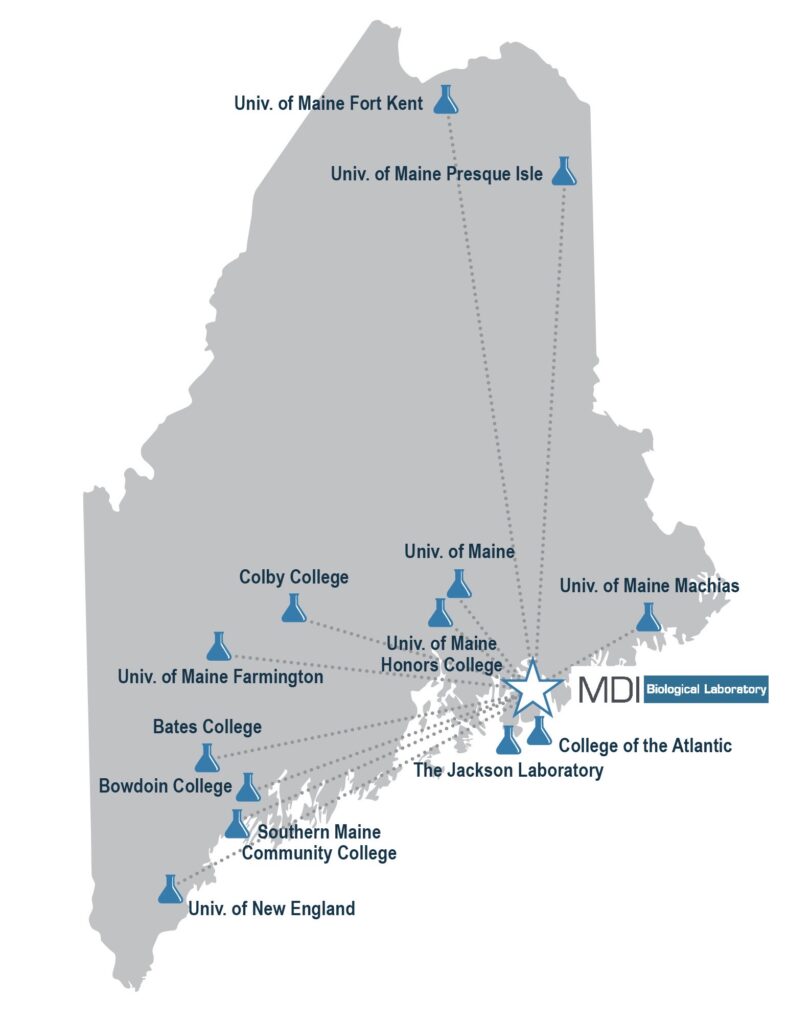
And those tools are at the service of science-hungry learners all over Maine, from high schoolers to senior researchers, thanks to a collaborative network of 14 educational and research institutions led by MDI Bio Lab. The network provides them the advanced tools, training, and research experience they need to fully participate in today’s biotech revolution.
The federally funded program is called the Maine IDeA Network of Biomedical Research Excellence (Maine INBRE), and over the last decade it’s trained and provided research experience to thousands of Mainers. Ninety percent of them have pursued post-graduate degrees or careers in health-related fields, and 21% are earning advanced degrees here in Maine.
MDI Bio Lab also hosts dozens of undergraduate summer fellows who spend up to 10 weeks embedded in the laboratories of our 11 biomedical research faculty. They are investigating fundamental mechanisms of aging and regeneration, aided by advanced gene-editing technology, bioinformatic and computational analysis, animal models for human health, and leading-edge 3D microscopy.
As many as 800 people cycle through the courses and conferences held on our seaside campus each year. After that gene-editing short course sponsored by the Maine INBRE network in early 2022, Broadbent initially volunteered in the laboratory of MDI Bio Lab’s Prayag Murawala, Ph.D., where he works with axolotl salamanders, whose prolific ability to regenerate limbs and organs (including the brain) is informing the search to improve our own regenerative capacities.
And thanks to support from our donors, Broadbent is now working as a paid research fellow, as he finishes up his undergraduate degree in molecular and cellular biology at the University of Maine.
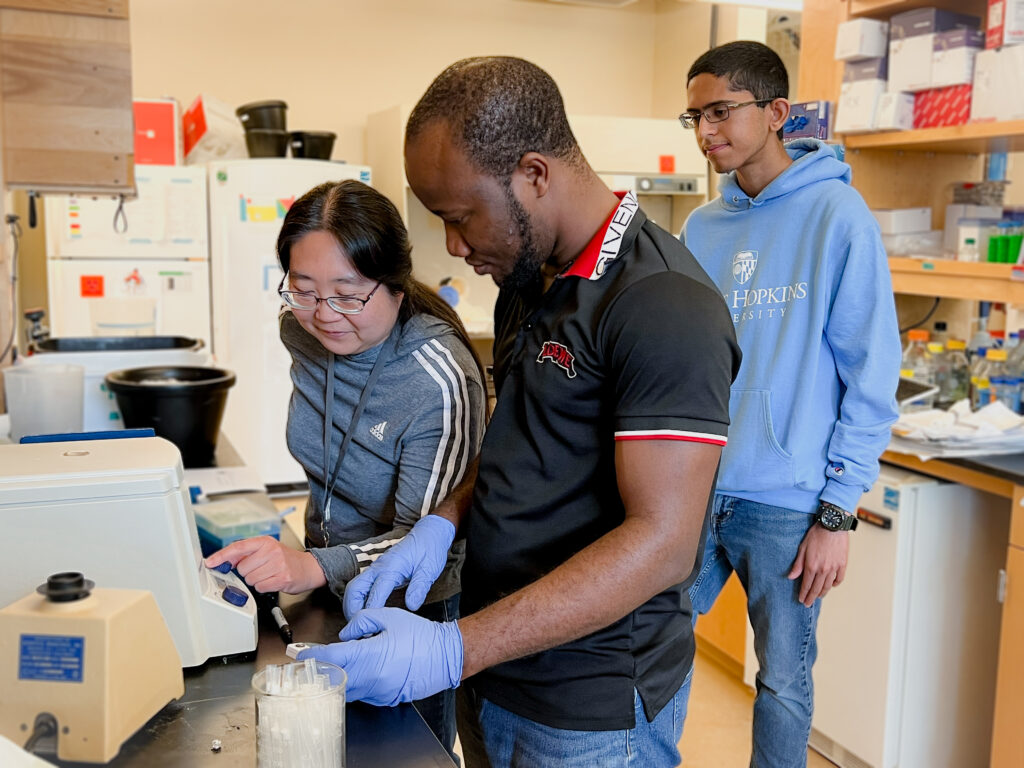
The University’s Honors College is a member of the Maine INBRE, as are Colby, Bates, and Bowdoin colleges, College of the Atlantic, the Jackson Laboratory, Southern Maine Community College, the University of New England, the University of Maine, and the UMaine system campuses at Farmington, Fort Kent, Machias, and Presque Isle.
Broadbent says he’s come to value MDI Bio Lab’s intimate and informal atmosphere.
“It’s small, there’s more community, not as corporate as some other places are, and there are opportunities to find a great mentor,” he says. “You can really talk to other scientists; there’s not so many barriers.”
Learn more about how scientists like Sam are using our cutting edge microscopes and other technology at our next Science Café, on August 14!
The post Biotech Training and Tools for Maine Students appeared first on MDI Biological Laboratory.
]]>The post Celebrating MDI Bio Lab’s 125 years with hands-on science! appeared first on MDI Biological Laboratory.
]]>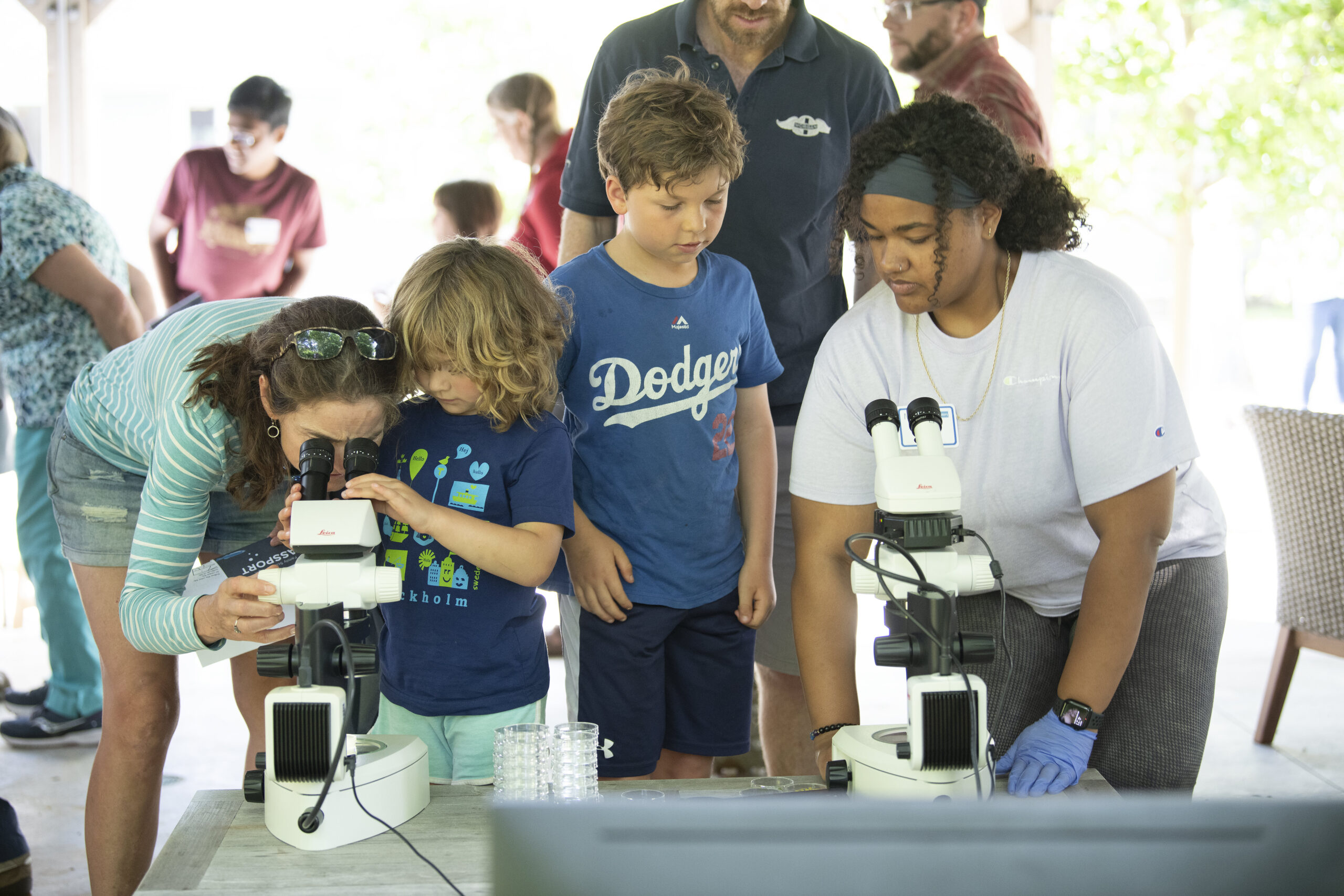
Celebrating MDI Bio Lab’s 125 years with hands-on science!
Every summer we open our seaside campus in Bar Harbor to the public for Family Science Night. Learners of all ages are invited for fun, hands-on science with our research leaders and their summer students.
And this year we’re also celebrating the non-profit MDI Bio Lab’s 125th Anniversary. Join us on Wednesday, July 12, from 4 to 6 pm as we mark more than a century of collaboration and innovation that aims to improve human health. (There will be ice cream.) Register here.
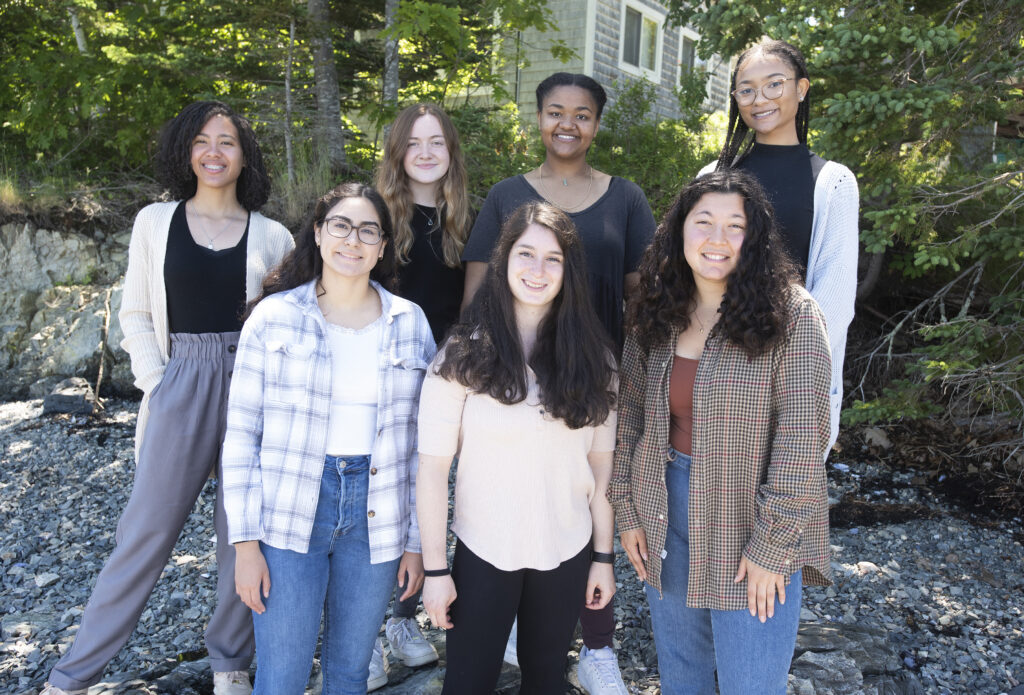
The participatory events are hosted by our international team of scientists and their summer undergraduate students. We host dozens of these college students, who spend up to 10 weeks embedded with our research groups.
They gain laboratory bench skills and participate in research projects. They work with unusual animal models for human health — fish, worms and salamanders — to study aging and regeneration. And the student fellows learn how to use state-of-the-art tools, such as gene editing, 3-D microscopy, and Big Data analysis.
The students will present more than a dozen activities and exhibits on Family Science Night, showcasing their new skills for learners of all levels, from grandkids to grandparents. Bring your friends and family and have a blast with a variety of hands-on science activities!
The post Celebrating MDI Bio Lab’s 125 years with hands-on science! appeared first on MDI Biological Laboratory.
]]>The post Tiny Worlds, Big Science: Biotech Tools for Maine appeared first on MDI Biological Laboratory.
]]>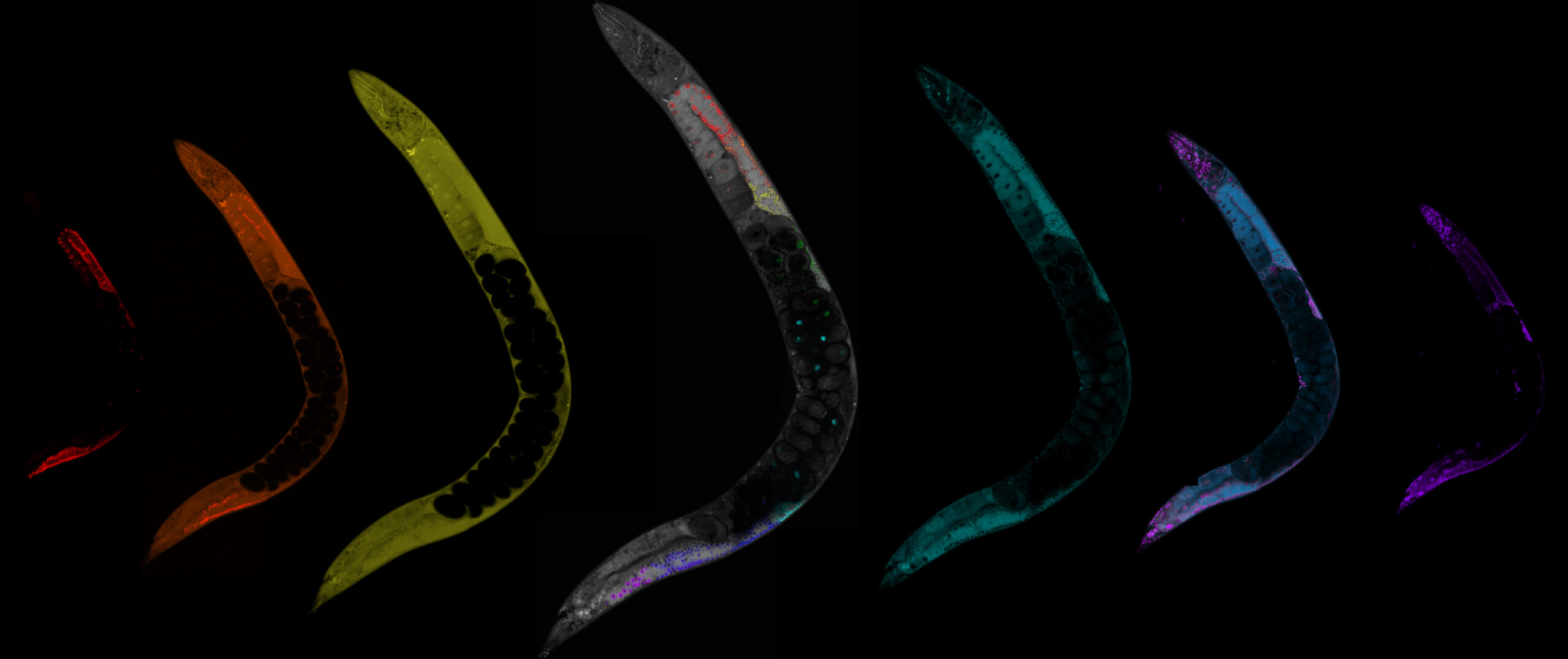
Tiny Worlds, Big Science: Biotech Tools for Maine
Photo Credit: Hannah Somers, MDIBL
Sometimes a new tool can spur a scientist to unexpected discoveries.
At the MDI Biological Laboratory in Bar Harbor, Maine native Emily Spaulding, Ph. D., is using an advanced “super-resolution” microscope to peer deeply into the cells of a tiny, transparent roundworm called C. elegans. What she’s found there opens a new window on diseases of the human brain.
“We can see cellular substructures and processes associated with neurodegenerative diseases such as Alzheimer’s and ALS,” Spaulding says. “Very little of this kind of work has been done in a living animal, almost none.”
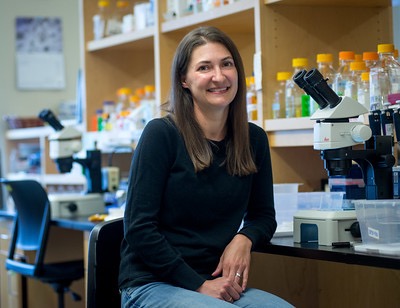
“Very little of this kind of work has been done in a living animal, almost none.”
Emily Spaulding, Ph. D.
A Rockland High School graduate who earned her doctorate at the University of Maine, Spaulding is now an MDIBL fellow – and a 2022 winner of the National Institutes of Health’s “Outstanding Scholars in Neuroscience” award.
She and colleagues just published their findings – including the discovery of a new gene protein – in Nature Communications.
Spaulding’s work demonstrates that the roundworms can provide a powerful new model for understanding how subcellular dynamics influence brain dysfunction in humans.
That’s just one of the biotech advances underway at the Laboratory, where faculty are also assembling another next-gen microscope, called a mesoSPIM.
Its “light-sheet” technology will open an unprecedented 3D view into the cell, while allowing entire organs and organisms to be imaged.
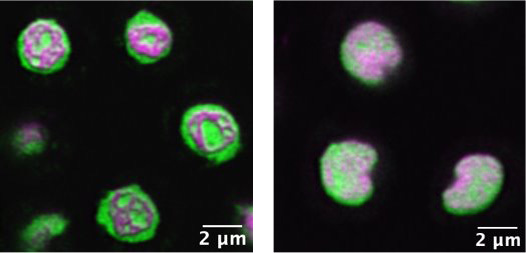
Photos: Emily Spaulding, Ph.D.
“For those purposes it’s a far superior technology compared to other microscopy,” says Prayag Murawala, Ph.D. a faculty member from the west coast of India who studies the axolotl, a remarkable salamander which can regrow limbs and organs.
“What is the 3D architecture of the nervous system? What is the 3D architecture of a blood vessel?” Murawala asks. “mesoSPIM will be a game-changer.”
And not just for MDIBL’s faculty.
The Laboratory shares its technology and expertise with outside scientists and a network of 14 college, university and institute campuses, from Biddeford to Fort Kent, that are collaborating to produce technically skilled graduates and a workforce for Maine’s growing life sciences sector.
You can invest in Maine’s science future and help to improve human health here
The post Tiny Worlds, Big Science: Biotech Tools for Maine appeared first on MDI Biological Laboratory.
]]>The post Creating New Ways to Find the Best Medicine appeared first on MDI Biological Laboratory.
]]>
Creating New Ways to Find the Best Medicine
Analysis of the eyes and cranial nervous system of postlarval zebrafish. Photo credit: Marko Pende, Ph.D., MDI Biological Laboratory, courtesy of https://www.science.org/doi/10.1126/sciadv.aba0365
Discovering new medicines is a complex and risky endeavor. Today, for every 5,000 drugs discovered, only one will be approved to treat human disease. On top of that, the approval process takes an average of 10 years and the cost can top $2 billion dollars per drug.
To help reduce the time and expense involved in bringing new drugs to market, the MDI Biological Laboratory recently launched MDI Bioscience to provide the expertise and tools needed to improve drug discovery. The goal is to evaluate potential drugs much earlier in the discovery process before money is spent on costly studies.
About MDI Bioscience
MDI Bioscience combines world-class expertise and non-mammalian disease models for target-based in vivo profiling of new drug compounds in whole organisms. Our assays deliver important data on the efficacy and organ toxicity of early-stage molecules before the initiation of costly and time-consuming mammalian studies. We use state-of-the-art gene-editing approaches like CRISPR to develop custom knock-in and knock-out models and transgenic biosensors in zebrafish, zebrafish larvae, and C. elegans. Assessing these models with high throughput imaging allows for faster screening of a greater number of compounds than would be possible with conventional mammalian models.
Today, potential drugs are tested in cell culture to assess whether they have the potential to treat a disease. MDI Bioscience uses zebrafish embryos to compliment this approach and provide a more complete understanding of a drug’s potential benefit or toxicity early in the discovery process.
Using zebrafish offers a number of advantages when compared to the current approach of testing isolated cells in a dish. As living organisms, zebrafish embryos have intact organ systems, and changes to organs, cells, and behavior can be easily observed. Additionally, zebrafish share 85% of the genes known to cause human disease and their genomes can be edited to create models of human diseases. Testing in disease models is critical for assessing whether new drugs can repair or reverse disease.
“Zebrafish allow us to make informed decisions earlier, ensuring that therapies with the greatest chance of benefiting patients receive the right priority,” says Jim Strickland, Director of MDI Bioscience. “This new approach has the potential to change the way new drugs are developed and reduce the number of drugs that fail after significant time and money have been invested,” said Strickland.
“Medicine has a pressing need for tools to make drug development more efficient and less wasteful so that we can get new medicines to market more quickly,” said Hermann Haller, M.D., president of the MDI Biological Laboratory. “MDI Bioscience is uniquely positioned to meet that need.”
The post Creating New Ways to Find the Best Medicine appeared first on MDI Biological Laboratory.
]]>The post Can a worm help humans age better? appeared first on MDI Biological Laboratory.
]]>
Can a worm help humans age better?
One of the many benefits of youth is the ability to heal wounds, mend broken bones and recover from illnesses faster than adults. This phenomenon suggests that aging is linked to a decline in regenerative ability.
Unraveling the perplexing relationship between regeneration and aging is a major focus of research at the MDI Biological Laboratory.
Though enormous advances have been made in our understanding of the cellular mechanism that regulate aging and regeneration, the two scientific fields have for the most part been operating in separate silos. Scientists at the MDI Biological Laboratory, using an approach known as comparative biology, seek to unite them by working to understand how they are interrelated.
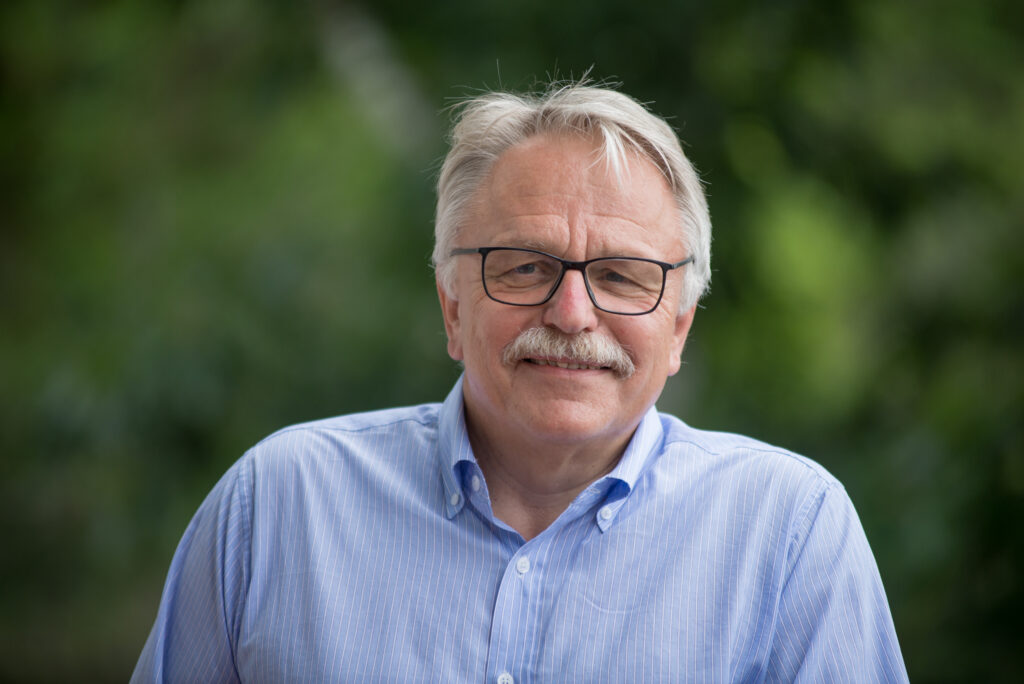
“A number of species have the capacity to withstand the ravages of aging by regenerating lost or damaged tissues”
Hermann Haller, M.D.
President of the MDI Biological Laboratory
“A number of species have the capacity to withstand the ravages of aging by regenerating lost or damaged tissues”, says Hermann Haller, M.D., President of the MDI Biological Laboratory. “By studying organisms that have this ability, we can learn important lessons about why humans largely cannot regenerate. This understanding will help us develop new therapies to stimulate our ability to repair damaged tissues and delay the onset of age-related diseases.
The need to study a range of animal models
Recently the MDI Biological Laboratory added a new animal model, the African turquoise killifish, to its repertoire of animal models to better understand regeneration and aging. The African turquoise killifish is one of the shortest-lived vertebrates, allowing scientists to quickly assess the effects of anti-aging therapies in an animal that is closely related to humans.
Many animals used in aging research display signs of aging that are similar to those in humans. C. elegans, for instance, a tiny nematode worm, becomes wrinkled, develops age spots and even has trouble moving as it ages.
Thanks to these powerful animal models, scientists are identifying the cellular and molecular pathways that are common to regeneration and aging. Once these common pathways are identified, scientists can develop effective therapies to slow he onset of age-related disease and allow us to live longer, healthier lives.
Over the coming months, MDIBL will share more news about new and exciting discoveries underway on its Bar Harbor campus. Sign up for monthly updates at mdibl.org/stay-informed.
The post Can a worm help humans age better? appeared first on MDI Biological Laboratory.
]]>The post Can the Axolotl Help Humans Grow Limbs? appeared first on MDI Biological Laboratory.
]]>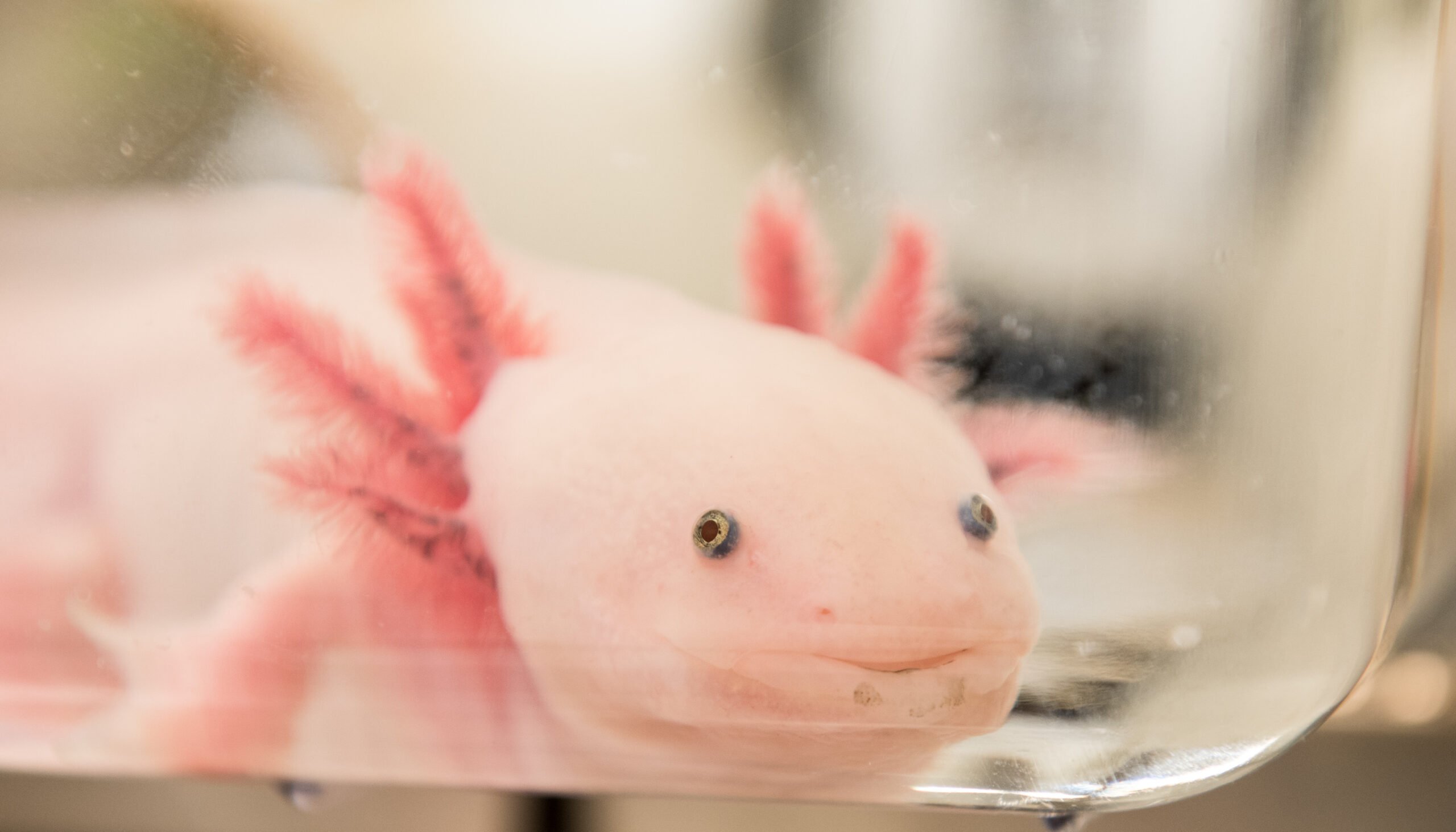
Can the Axolotl Help Humans Grow Limbs?
As MDI Biological Laboratory (MDIBL) works to answer critical questions about regeneration, this tiny creature, known as axolotl, or Mexican salamander, may hold the key. Native to Mexico City, these ancient creatures are masters of regeneration. Unlike humans, the axolotl can regrow almost any body part, including the brain, heart, jaws, limbs, lungs, ovaries, spinal cord, skin, and tail. Limb loss affects nearly 2 million people in the United States alone. And while many limbs are lost as the result of traumatic injury, the majority are lost to diabetes and other diseases that affect the health of blood vessels.
When humans suffer traumatic injury, we form a fibrotic scar because we are unable to regenerate the deeper layers of our skin and connective tissue. Once a scar has developed, it’s “game over” in terms of regeneration. Thus, the ability to trigger regeneration in humans depends on getting around the scarring hurdle. Axolotls, on the other hand, don’t form a scar. Instead, cells at the injury site are triggered to regrow new tissue.
Scientists at the MDI Biological Laboratory are working to understand the intricate interactions between various cell types to understand how the choice between scarring or regrowth is determined. If regeneration in humans sounds like science fiction, it shouldn’t. Humans have a limited ability to regenerate – for instance, newborns can regenerate heart tissue, and children can regenerate fingertips. It’s likely that the circuitry is already there, but has been turned off to protect us against the threat of uncontrolled cell growth – or cancer. But what if we could temporarily reactivate this dormant circuity in adult humans long enough to repair an injury?

James Godwin, Ph.D. explores the molecular signals from nerve and immune cells in the axolotl that underpin their resistance to scarring and active regeneration in hopes of helping human patients repair tissue after surgery, disease, or traumatic injury.
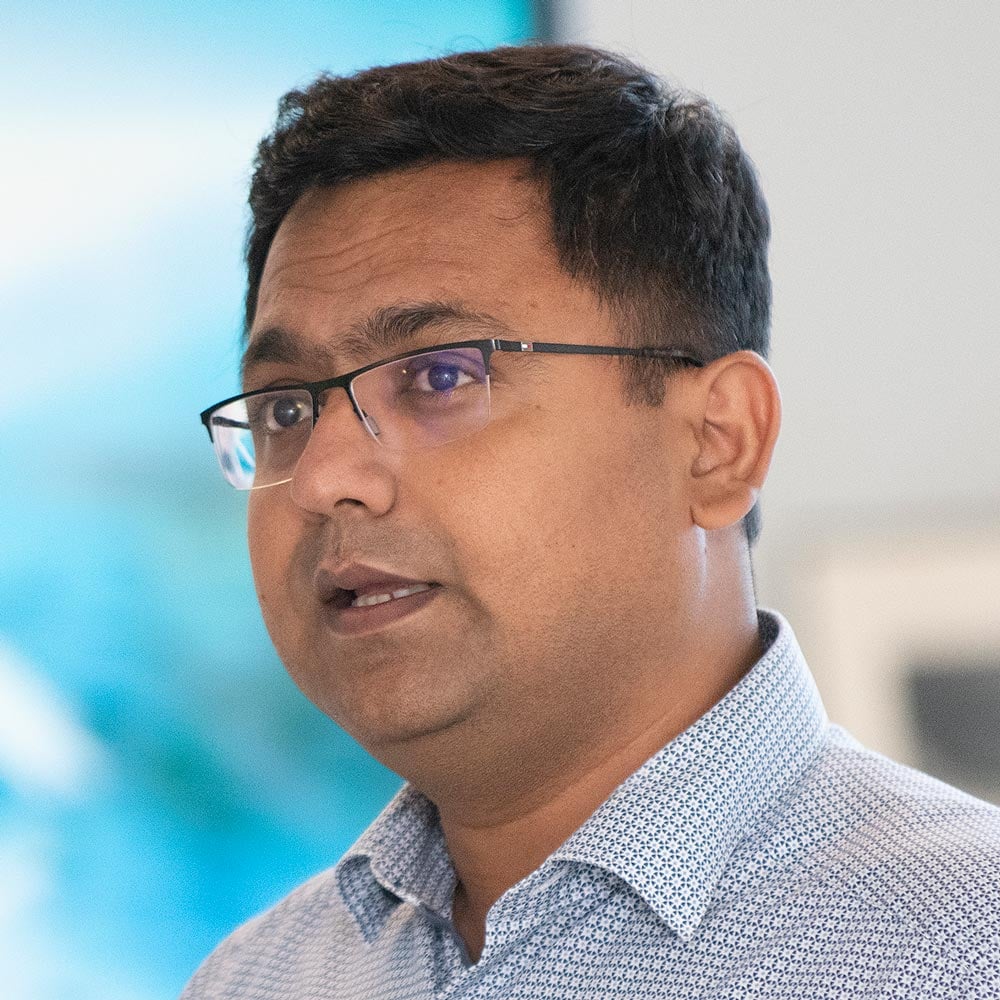
Prayag Murawala, Ph.D. tries to answer how tissue types such as the epidermis, bones, muscles, fibroblasts, nerves, vasculature, and immune cells in the axolotl coordinate after an amputation to perfectly restore the lost portion.
Although regrowing a body part as complex as a human limb may be years away, significant opportunities exist for therapies to improve clinical outcomes in diseases in which scarring plays a substantial role in the pathology, including heart, kidney, liver, and lung disease. As MDIBL continues to partner with other scientists in Maine and around the world to solve this challenge, our natural ability to heal and repair damage caused by disease and injury gets a little closer every day.
The post Can the Axolotl Help Humans Grow Limbs? appeared first on MDI Biological Laboratory.
]]>